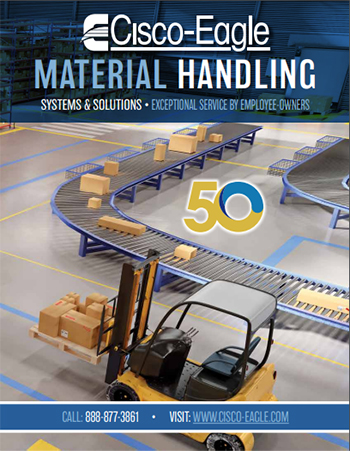Walking-Working Surfaces and Personal Fall Protection
OSHA regulations and ways to comply and protect your employees who work at height
Fall Protection Equipment Inquiry

Rooftop safety is an often overlooked area for any facility when it comes to keeping workers protected. In the past, there was minimal equipment designed for this purpose and limited education/training.
OSHA issued a recent ruling on walking/working surfaces, which stressed the need for fall protection for those surfaces (29 CFR 1910 Subparts D&I). This may be significant for a number of operations and the way you protect people who work in these areas. Particularly if you have a rooftop edge or other potentially unguarded platform where people may work, there are steps you should take.
Workplace assessment requirements
Perhaps the biggest takeaway from the rule is its requirement for fall hazard protection assessments. 1910.132(d) now requires workplace assessment. To avoid non-compliance, here are some steps you should take:
- Determine whether hazards are present in a given area. If you find that they are, develop a plan that includes employee communications and proper PPE (personal protective equipment) for the situation. The key here is communications and process.
- Work within your company. If you are a safety or EHS manager, coordinate with other entities to assess hazards for multiple sites, departments and divisions.
- Document your work. It’s key to record and document your assessments and safety measures. This should include what workplaces were evaluated, who did the evaluation, any certification process, corrective actions, and the dates/times these steps were taken.
Corrective equipment for rooftop edges

Rooftop fall protection systems:
The regulation states that work at less than 6′ from the roof edge requires conventional means of protection (guardrail, PFAS, etc.). From 6-15 feet, the new rule allows for a designated area for infrequent or temporary work, which is further defined in the commentary section of the rule.
Installing a rooftop fall protection system provides the needed protection to keep workers from the edge of the roof. With a system like the Railguard 200 in place, you effectively keep employees from the dangerous edges of your roof by a series of interlocking barriers. With easy connectivity and simple reconfiguration, you can limit rooftop edge access for the desired amount of time in any situation.
Options like powder coating and highly visible finishes like safety yellow, allow you to weather the elements and keep workers safe!
Read more: Fall protection basics for your warehouse

Warning lines
A simple, yet effective way to increase rooftop edge awareness is by using warning lines. These folding bases and high-visibility flags clearly mark safe and unsafe zones – and they can be set up quickly to respond to the needs of the job site.
With a handful of bases in place, you can add lines that won’t sag when put in place. Similar to the construction regulations, a warning line is also required at 6′ to serve as a warning that a worker is nearing an unprotected edge.
Fall protection gates

The regulation also excludes the use of chains to close access openings and no longer allows for a “parapet alternative” option – where a shorter (30-inch) barrier, such as a parapet, was allowed, as long as it had sufficient width (18 inches). This would allow for the use of an adjustable safety gate, such as one meant for mezzanine access.
Easily installed at ladder access points on a roof, these self-closing gates are durable and highly visible. Gates swing inward toward the platform providing a secure brace against bumps and falls, keeping people and products safe, and are adjustable from 27″ to 40″.
Read more: Rooftop crossover specification
Final thoughts
With the ruling in an excess of 500 pages, reviewing the extent of each aspect here is not possible. It’s always worthwhile to ensure you are meeting standards, particularly since there were 5,295 fall protection violations in the construction industry, and almost 2,000 fall protection training violations in 2021 according to OSHA statistics. Fall protection was (once again) the top violation for the 11th year in a row.
Protecting people on rooftop edges, mezzanines and docks is always a concern, but with the right training and equipment, you can create a safe environment at any height.
Download our catalog
At Cisco-Eagle, we pride ourselves on being a single source for your material handling needs with a long history of performance you can rely on. Because we also believe in empowering our customers with detailed information and options, we’re proud to offer the latest version of our company catalog.Download the catalog today
Scott Stone is Cisco-Eagle's Vice President of Marketing with 35 years of experience in material handling, warehousing and industrial operations. His work is published in multiple industry journals an websites on a variety of warehousing topics. He writes about automation, warehousing, safety, manufacturing and other areas of concern for industrial operations and those who operate them.




